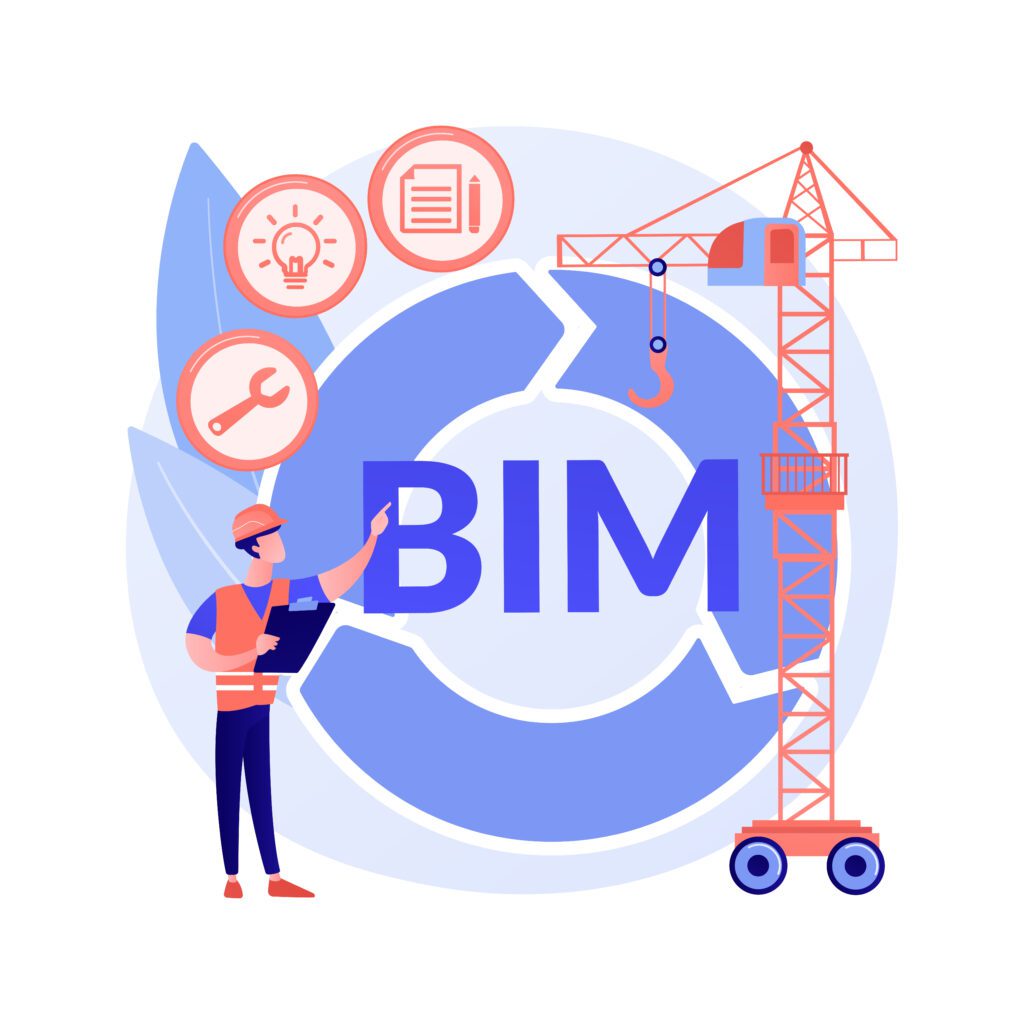In recent years, digitalisation has led to significant advances in the construction sector, such as computer-aided design, and participation in participatory bidding on digital platforms, among others. However, one of the main innovations in the construction industry has been the introduction of Building Information Modeling (BIM) in processes to improve results. We are talking about a work methodology that has generated a link between people, technology and methods to create and manage data during the design, construction and operation phases.
Through digital and three-dimensional (3D) representation of construction works and associated services, all this is a fundamental sector revolution. Not too long ago, a project was executed by collecting information on a construction plan based on a 2D approach that made it challenging to visualise dimensions and technical requirements.
The purpose of this post is precisely to deepen the concept of BIM and to underline its importance in the construction world.
Index of contents
BIM Concept
Building Information Modelling is a digital, three-dimensional representation of building works and related services, capable of managing a mass of data, information and documents— all to define every detail within the most complex and hierarchical system of a construction site.
BIM, therefore, makes it possible to have a reliable and transmissible amount of information available, compiling all the data of a building in a single tool. This model also promotes business growth based on teamwork and collaboration of those involved in the design phase.

In addition, by providing a wealth of information, BIM makes it possible to construct a building, considering its impact on the environment and minimising the risk of waste and overconsumption.
The importance of Building Information Modelling
With the increase of the world’s population in the coming decades, it is necessary to identify efficient construction methods from all points of view. It is precisely within this scenario that the concept of BIM fits since, through the adoption of this model, it is possible to work smarter.
One of the main advantages of Building Information Modelling is the possibility of minimising errors during the design phase. There are, however, other contributions of BIM in the construction field, such as:
It saves Time and Money
Time and money are the most critical factors in the construction industry. Time is money, and BIM speeds up processes, which means projects become completed on schedule and, sometimes, ahead of schedule, helping to save on costs.
A survey conducted by the National Building Specification (NBS) in the UK showed that BIM contributed to increased delivery rates for 55% of UK construction workers.
Building Information Modeling provides accurate and reliable data in real-time. Before the construction phase has even begun, the construction costs can be planned. Saving money on:
- Materials
- Labour and wages (based on construction schedule).
- Reduce human errors that can lead to delays and costly repairs.
In fact, according to some experts, BIM can help you save up to 15% on costs. This is because it allows you to manage your projects better, enabling you to visualise everything from start to finish. All of this makes it easier for you to detect errors early and correct them before they become too expensive or time-consuming.
Optimization of communication
BIM improves communication between business owners, architects, clients, and other stakeholders. Since everyone has different backgrounds, units and skills, this model can act as a common language that facilitates project understanding through software interfaces.

Building Information Modelling only shows the truth. This means all relevant information is shared and stored in the same place for stakeholders to view and comment.
In addition, this model becomes used by builders and contractors. This way, they always have access to the latest updated information on the project, including changes related to the processes, fostering better communication among those involved (including investors or buyers).
Eliminates the margin of error
The more you rely on manual work on a construction project, the greater the risk of mistakes. Using traditional methods such as spreadsheets, e-mails, and post-it notes only increases the chances of failure.
Imagine how much damage can be done by an omitted zero or an extra zero being added when someone is placing an order. The BIM model also becomes used for bills of materials, allowing the purchasing team to order the suitable material in the correct quantity, which translates into less waste.

Conclusions
The construction industry is exposed to many problems, which will continue unless everything changes. One of the most significant difficulties for many construction companies is collaborating on project management; however, with BIM, most of these issues can become resolved.
Building Information Modelling represents the future. Therefore, the industry has already started digitising construction processes to eliminate all the old or analogue tools that only increase the margin of error in this type of project.
Many companies have integrated the BIM model into their building process to guarantee good results in each construction phase.
